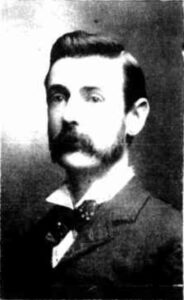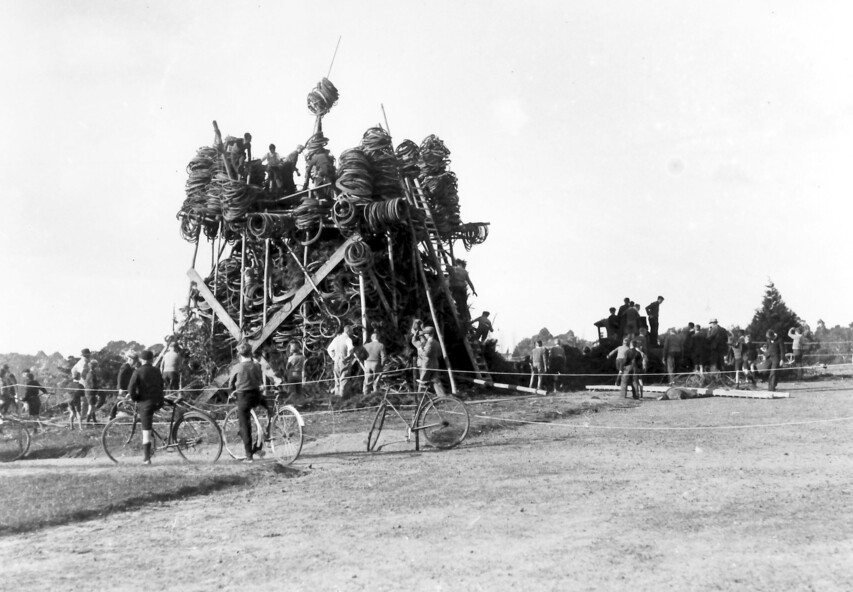Beckett Park is one of my favourite open spaces in Boroondara. Together with the adjacent Maranoa Botanic Gardens (which deserves its own post), it’s a wonderful green area on top of one of the tallest hills in the neighbourhood.

Establishment and naming
The place where it is today was formerly open scrub and grassland. Before European settlement in the 1840s and 50s it was home to the Wurundjeri people of the Kulin Nation. By the mid to late 19th century, Balwyn had sprung up as a small but notable village including churches, some shops and schools. At the time the land surrounding it was mainly now used for agriculture.
As Balwyn gradually expanded in size and population the area now known as Beckett Park became known as ‘One Tree Hill’.
In July 1916, the Balwyn Progress Association presented a proposal to Camberwell Council to establish a park here, urging them to acquire land before residential development encroached onto the site.
The proposal was warmly received by councillors and approved at the Council meeting on 12 June 1916 with many making observations about the location’s pleasant nature and panoramic views. Cr John Maling – the first mayor of Camberwell – remarked that people “could get on the top of that hill and so get nearer to heaven”.
The Reserves Committee of Camberwell Council were instructed to manage the establishment of the park. But as they began this process and purchased land for this purpose in 1917, the long-serving and well-respected councillor and former mayor, Robert Beckett, died on 2 June of that year.

At the time the Association had planned to name it ‘Soldiers’ Park’ and doubled down on this when the suggestions to name it after Beckett first arose. Their position appears to have been met with universally negative reactions from both the press and political leaders, with the Hawthorn, Kew and Camberwell Citizen calling the suggestion “unkind and unworthy”.
Despite the continued protests of the Progress Association, Council resolved to name the park after Cr Beckett in recognition of his role in establishing the park and for his significant and positive contributions to the community during his life.
Soon afterwards, a committee of management was established with three councillors from the North Ward and three members of the Balwyn Progress Association as members.
Bonfires
Following the First World War Beckett Park became famous for its huge Empire Day celebrations. Empire Day was an old milestone that was celebrated throughout the British Empire, with the last official one being held in Australia in 1958 and is today known as Commonwealth Day.
At Beckett Park this involved lighting a massive bonfire on top of the hill. People would come from far and wide to ‘contribute’ to the ever growing tower of wood and other flammable materials. In many cases, this was little more than people dumping their rubbish into the pile for free and easy disposal.

These fires were famous across the city. There were street parades and nearby buildings were decked out in decorations and lights for the duration. In 1939 the celebrations attracted a crowd of over 10,000 people.
Bonfires here continued well after Empire Day stopped being an official celebration in Australia in 1958, having been renamed to ‘Cracker Day’. The last one was held in 1988. A plaque today commemorates the occasion near the Parring Road entrance.
Beckett Park today
Probably the best known landmark today is the Centenary Tower in the eastern portion of the park.

This was built in 1934 to commemorate the centenary of Victoria. It was deliberately built at the Park’s highest point so that it gained the best views. One proposal at the time envisaged a much grander structure attracting 30,000 visitors per year but this much more modest tower was built using funds raised from Camberwell Council, community organisations and local philanthropists and residents. It was officially opened in August 1937 which became an instant tourist attraction.
Today you can see in every direction and as far as Mount Macedon, the Dandenong Ranges and the CBD on a clear day. There are two observation levels at the top – one at the very top enclosed in a metal cage and another just below.

There are many other historic features from this period in the 1930s when most of the park was developed. These include old lampposts like this one in the photo below that still operate today.

Another feature that still operates is this drinking fountain located next to the playground that was built in 1937 as part of the works to build the Centenary Tower and continues to dispense water. It was one of several donated across Melbourne by wealthy businessman Oliver Gilpin, who lived nearby in his extravagant mansion ‘Idylwylde’ on Yarrbat Avenue.

The large playground is also a local favourite. I don’t know exactly when it was built but if I had to guess I would say the early 1990s.

I remember thoroughly enjoying this playground as a child, especially the wooden maze and the sandpit. The clump of tea trees right next door also serves as an informal playground with heaps of hiding places and tree branches to climb. We also came here once on a ‘Teddy Bear’s Picnic’ back in primary school.
Beckett Park and Maranoa Gardens really are Balwyn’s jewel in its crown. With a rich history, beautiful scenery and wonderful facilities it’s no wonder that it continues to be popular almost 110 years after it was established.

If you’re interested in more details I can recommend the following:


Leave a Reply